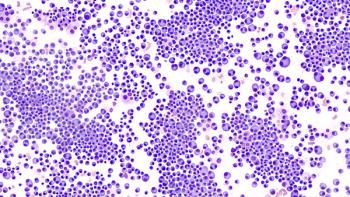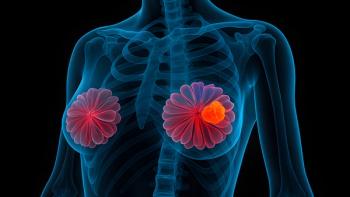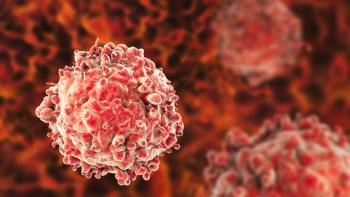
Prompt Intervention During Infusion-Related Reactions Is Essential
Maura Price, MSN, RN, AOCNS, discusses common infusion-related reactions and the principles of desensitization.
Nurses need to be prepared to recognize different type of reactions and grade them in accordance with Common Terminology Criteria for Adverse Events (CTCAE) criteria, explained Maura Price, MSN, RN, AOCNS, during a presentation at the Oncology Nursing Society (ONS) Bridge.1
“Being able to distinguish between the different reaction types and the grading is essential,” said Price, who is an oncology clinical nurse specialist at Lehigh Valley Health Network.
“Prompt intervention is key.”
As Price explained, there are many different types of reactions that a patient can experience. The most common symptoms of a reaction, regardless of type, tend to affect a patient’s skin, breathing, cardiovascular system, or gastrointestinal tract. Fevers, nausea, chest pain, wheezing, or itching can all be indicative of an adverse reaction.
In her presentation, Price outlined what nurses should expect with 3 different types of reactions: cytokine release syndrome (CRS), anaphylaxis, and infusion-related reactions. She went on to discuss reaction management, highlighting that when the reaction has concluded, it is useful for nurses to debrief and assess so that next time, they are even better prepared.
“I feel like we treat reactions all day every day, so [with] the severe reactions, it is great to do a debrief and say: how did things go? How would you do things differently in the future?” Price said.
“During any emergency situation, a reaction, a code, a rapid response, it is great to debrief and have those discussions afterwards.”
Identifying Reactions
CRS is caused by the release of cytokines and presents itself with fever, tachypnea, headache, tachycardia, hypotension, rash, and/or hypoxia.
Anaphylaxis is caused by the release of histamines or histamine-like substances from mast cells, which, in turn, results in a hypersensitivity immune response. Patients will have trouble breathing, experience dizziness, hypotension, cyanosis, and loss of consciousness with anaphylaxis, and it can lead to death.
Infusion-related reactions are any adverse reactions to a pharmacological or biological substance.
As Price emphasized, CTCAE guidelines should be used to grade these reactions.
“What I love about the CTCAE grading is that it is very objective and specific,” Price said. “If I were to grade it, it should be the same as [if] Katie, our moderator, were grading it.”
Infusion-related reactions
A grade 1 infusion-related reaction is a mild transient reaction. Infusion interruptions are not indicated in this setting nor are interventions. However, for a grade 2 reaction, providers should interrupt infusion and promptly intervene with either antihistamines, nonsteroidal anti-inflammatory drugs, narcotics, or intravenous (IV) fluids. A grade 2 reaction should immediately respond to prompt intervention.2
“[For] grade 2, we are interrupting the therapy, but we need to give them some symptomatic treatment,” Price explained. “Grade 3 is more of a prolonged reaction. This is where we stop the medication, we intervene, [and] we give some of those rescue medications, but the patient is still having hives or shortness of breath.”
If the reaction is prolonged, and does not respond to intervention, then it is a grade 3. Grade 3 reactions are also characterized by recurring symptoms following initial improvement. Patients with grade 3 reactions should be hospitalized for clinical sequalae. Lastly, grade 4 reactions have life-threatening consequences. Urgent intervention is needed for grade 4 reactions.
“Grade 1 or 2 is mild, [while] grade 3 or 4 is more severe,” she said.
Cytokine Release Syndrome
Grade 1 cytokine release syndrome is characterized by a fever, with or without constitutional symptoms. Grade 2 cytokine release syndrome presents with hypotension that respond to fluids and hypoxia that will responds to oxygen via nasal canula (less than 40% 02). Once a patient develops hypotension that requires a pressor to manage, or hypoxia that requires at least 40% O2, they have developed grade 3 CRS.
If a patient develops grade 4 CRS, their situation is life threatening, and requires urgent intervention.
The CTCAE guidelines note that nurses should consider reporting other organ dysfunctions—including neurological toxicities, like hallucinations or confusion, and nervous system disorders, such as seizures, dysphasia, tremor, or headaches—when reporting CRS.
Anaphylaxis
Anaphylaxis does not occur at a grade 1 or 2 level. Grade 3 anaphylaxis is characterized by symptomatic bronchospasm, with or without urticaria. Patients may also experience allergy-related edema, angioedema, and hypotension. To respond to grade 3 anaphylaxis, parenteral intervention is indicated.
Grade 4 anaphylaxis is life-threatening and must be urgently treated.
“There is not really a mild anaphylaxis reaction,” Price said. “These are very severe reactions.”
Hypersensitivity
According to Price, the literature shows that the Brown Classification for Hypersensitivity is used by many allergists, although most oncology teams do not use this classification. In this classification system, a mild hypersensitivity reaction is one where 1 organ system is affected (usually the skin). A moderate reaction is when 2 organs systems or more are affected, but there are no changes in vital signs.
“Let us say our patient is short of breath and is also experiencing some cramping or nausea. That would be a moderate reaction because we have 2 or more organ systems (at play),” she explained.
A severe reaction encompasses 2 or more organ systems and is accompanied by changes in vital signs. Examples of this may be severe hypoxia, hypotension, or neurologic compromise.
What’s Next?
Rechallenge
For patients with a mild reaction, rechallenge may be appropriate. Price explained that with certain drugs they will try again with the same rate and dose as before. However, with other drugs, for example, rituximab (Rituxan) or obinutuzumab (Gazyva), the prescribing labels offer titration guidelines.1
Additional Work-Up
According to Price, additional work-up can be warranted in many cases. If there is a good relationship between an allergist and the oncology team, an allergist can measure tryptase levels or conduct skin tests to determine if the reaction was a true drug allergy. When cell degranulation of mast cells occurs, within the next 30 to 60 minutes, patients will have higher tryptase levels than normal.
“That can be an indication of a true allergy vs a drug intolerance,” Price said.
Desensitization
Price also discussed desensitization, which involves slowly reintroducing the drug that caused the reaction to the patient.According to Price, “slow” is the way to go in this arena.
“We give very slow administration of that drug,” she said. “We give multiple doses of premedications, so the patient is given a script for premeds to take at home the night before they are coming in for desensitization and the morning of desensitization. Then we are giving more premeds in the chair before we start desensitization.”
For example, with oxaliplatin, patients who need desensitization will receive the therapy through very small increments over a long period time. Patients will also receive 25 mg of IV diphenhydramine (Benadryl) and 20 mg IV dexamethasone (Decadron) as premedication prior to their infusion.
Ultimately, they will receive 5 bags of therapy. Starting with 1 of 10,000th of the total dose over the course of an hour, they will go on to receive 1 of 1,000th of the total dose over the course of an hour, followed by 1/100th of the total dose over an hour, and then 1/10 over an hour.
The remainder of the total dose (bag #5) will be administered to the patient over a course of 4 hours. Of course, this example applies to the inpatient setting. However, Price noted that during COVID-19 pandemic, there were few beds available, and they needed to find a way to conduct desensitization in the outpatient setting.
“Our largest infusion area is only open for 10 hours,” Price shared, stating that they had come up with a plan that was both safe, practical, and accounted for the time resources available. To that end, their outpatient protocol is largely similar to their inpatient one: patients receive the same premedication, and their first 4 bags of chemotherapy are the same. However, in the outpatient setting, bag No. 5 is given over a duration of 2 hours.
The premise behind desensitization is to help the patient develop a temporary tolerance to the agent causing the reaction. Close observation is crucial for safe desensitization. It is also important that desensitization be conducted in a controlled environment with emergency equipment available. Of note, patients cannot undergo desensitization if they have contraindications to the medication, meaning they had an extreme allergic response (Stephens Johnsons syndrome, erythema multiforme, etc.).
“This is a temporary tolerance. Once desensitization stops, the patient will not be able to tolerate the drug,” Price concluded. “It is not a permanent tolerance. We have to do this every time the patient is receiving this drug.”
References
- Price M. Reactions and desensitizations.Presented at: Oncology Nursing Society Bridge. September 13-15, 2022; virtual.
- Common terminology criteria for adverse events (CTCAE) v5.0. November 27, 2017. Accessed September 22, 2023. bit.ly/3TlJF7n
Newsletter
Knowledge is power. Don’t miss the most recent breakthroughs in cancer care.
















































































